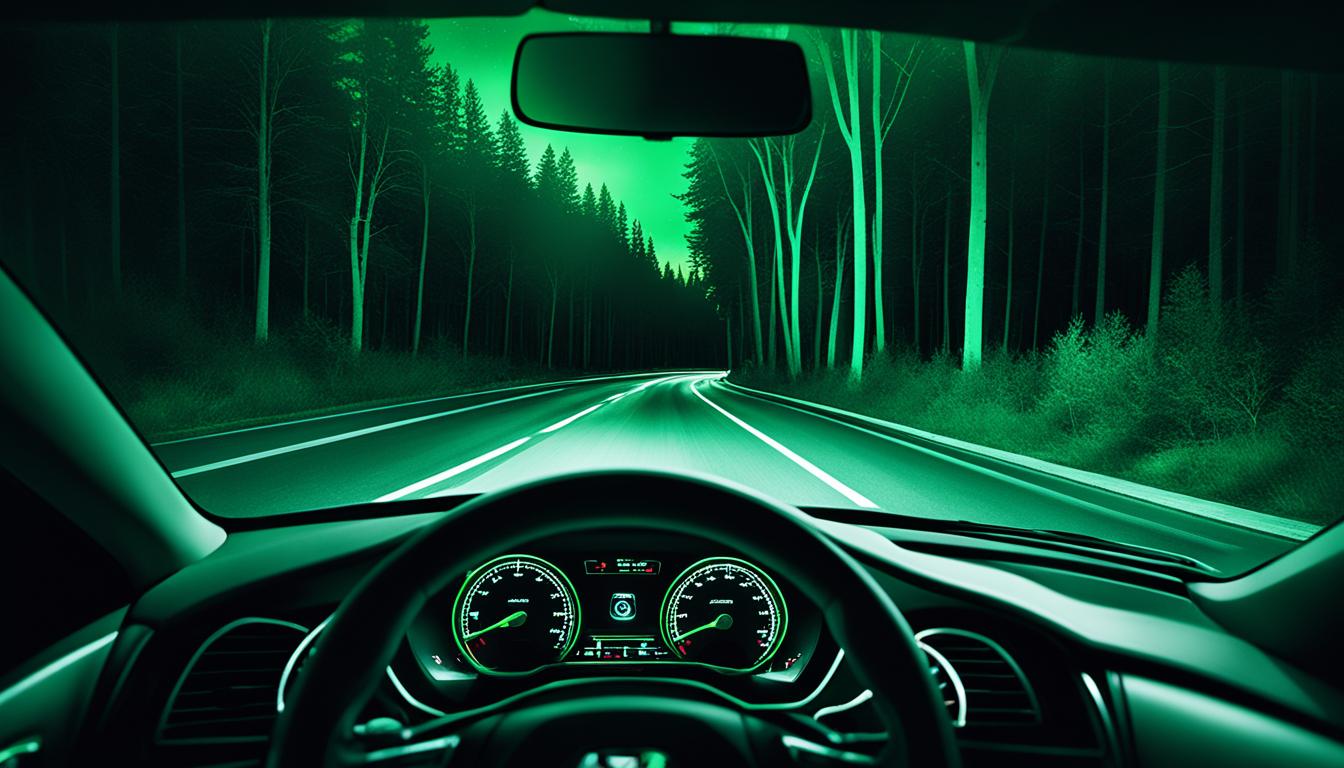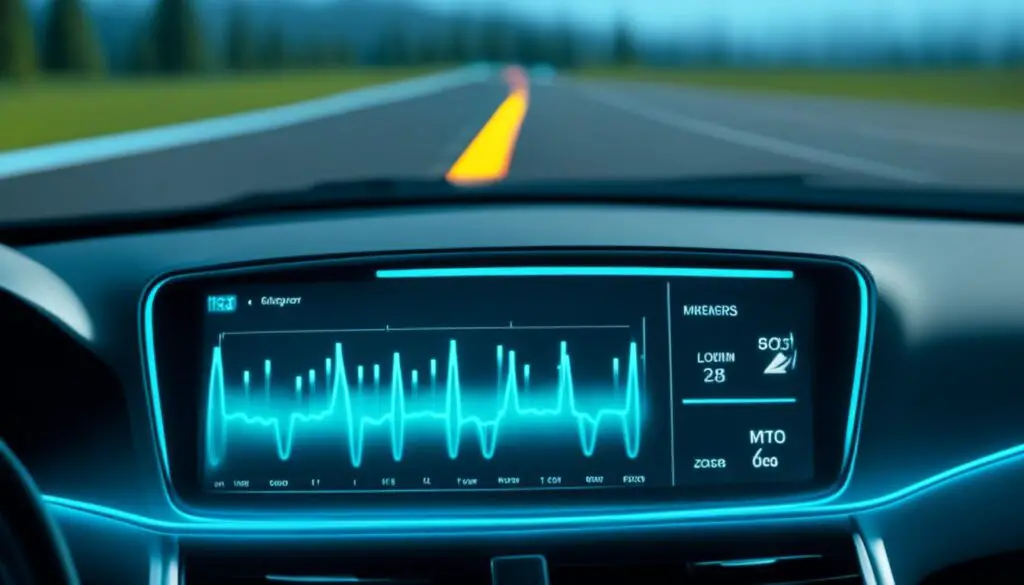
Seeing Beyond: Unveiling Automotive Night Vision Systems
Automotive night vision systems are revolutionizing driving safety by enhancing visibility in low light conditions. These advanced systems use infrared technology to detect objects and pedestrians beyond the reach of traditional headlights. By providing drivers with a clear view of the road ahead, automotive night vision systems help prevent accidents and improve overall road safety.
Imagine driving on a dimly lit road at night, struggling to see what lies ahead. Traditional headlights can only illuminate a limited distance, leaving drivers vulnerable to unexpected obstacles. That’s where automotive night vision systems come in. These cutting-edge technologies take driving safety to a whole new level.
With infrared sensors strategically placed on the vehicle’s front grille, automotive night vision systems can “see” beyond the reach of traditional headlights. They detect and capture the heat signatures emitted by objects and pedestrians, allowing drivers to anticipate potential hazards before they become dangerous. The captured thermal images are then processed by a computer algorithm that identifies and displays these objects on a dashboard screen, providing real-time information to the driver.
The benefits of automotive night vision systems are undeniable. Enhanced visibility in low light conditions empowers drivers to navigate safely through challenging situations. By detecting and avoiding obstacles, these systems help prevent accidents, saving lives and reducing injuries on the road.
Key Takeaways
- Automotive night vision systems enhance visibility in low light conditions.
- These systems use infrared technology to detect objects and pedestrians beyond the reach of traditional headlights.
- By providing real-time information, automotive night vision systems help drivers prevent accidents and improve road safety.
- Thermal images captured by infrared sensors are processed by a computer algorithm for display on the vehicle’s dashboard screen.
- The future holds exciting advancements for automotive night vision systems, further enhancing safety on the roads.
How Automotive Night Vision Systems Work
Automotive night vision systems harness the power of infrared technology to detect the heat emitted by objects and pedestrians, enhancing driving safety in low light conditions.
These advanced systems consist of infrared sensors strategically mounted on the vehicle’s front grille. These sensors capture thermal images of the road ahead, which are then processed by a sophisticated computer algorithm.
The algorithm analyzes the heat signatures within the captured images, enabling the system to detect objects and identify potential hazards or obstacles. By precisely interpreting the infrared data, automotive night vision systems provide real-time information about the surrounding environment to the driver.
The system displays the detected objects on a screen integrated into the vehicle’s dashboard. This visual display ensures that the driver is immediately alerted to the presence of potential dangers, allowing them ample time to react and avoid collisions.
| Advantages of Automotive Night Vision Systems | Benefits |
|---|---|
| Enhanced visibility in low light conditions | Improved ability to detect and avoid obstacles |
| Early warning system for potential hazards | Enhanced overall road safety |
| Increased driver confidence and peace of mind | Reduced risk of accidents |
The integration of automotive night vision systems into modern vehicles has the potential to revolutionize the way we drive. By utilizing the power of infrared technology, these systems effectively prevent accidents and contribute to a safer road environment for everyone.
The Future of Automotive Night Vision Systems
As technology continues to advance, we can expect even more impressive developments in the field of automotive night vision systems. Innovations such as augmented reality overlays and predictive analytics hold the potential to further enhance the capabilities of these systems, making driving even safer and more efficient.

With the ongoing focus on road safety, automotive night vision systems are poised to play a crucial role in preventing accidents and safeguarding lives on the road.
Benefits and Future of Automotive Night Vision Systems
Automotive night vision systems offer a multitude of benefits that greatly enhance road safety. One of the key advantages is the ability to provide enhanced visibility in low light conditions. With these advanced systems, drivers can now see beyond the limitations of traditional headlights, allowing them to anticipate and react to potential obstacles on the road more effectively. The improved visibility empowers drivers to navigate safely through challenging night-time driving scenarios.
By enabling drivers to have a clear view of the road ahead, automotive night vision systems can significantly reduce the risk of accidents. With the ability to detect objects and pedestrians beyond the reach of headlights, these systems serve as an invaluable tool for early hazard detection. The real-time information displayed on the vehicle’s dashboard screen alerts the driver to potential obstacles, providing them with precious seconds to make crucial maneuvers and avoid collisions.
As technology continues to advance, the future possibilities for automotive night vision systems are promising. With ongoing research and development, we can expect to see advancements that further enhance the visibility and capabilities of these systems. These future advancements may include improved image processing algorithms, higher resolution thermal imaging, and integration with other advanced driver-assistance systems, creating a more comprehensive safety ecosystem for vehicles.
In conclusion, automotive night vision systems offer enhanced visibility, contributing to improved road safety. By allowing drivers to see beyond the limitations of traditional headlights, these systems help prevent accidents and enable safer navigation even in low light conditions. With ongoing advancements in technology, the future of automotive night vision systems holds great potential for further enhancing road safety and revolutionizing the driving experience.
FAQ
How do automotive night vision systems work?
Automotive night vision systems utilize infrared technology to detect the heat emitted by objects and pedestrians. These systems consist of infrared sensors mounted on the vehicle’s front grille that capture thermal images of the road ahead. The captured images are then processed by a computer algorithm that analyzes the heat signatures and identifies potential obstacles or hazards. The system then displays these objects on a screen in the vehicle’s dashboard, alerting the driver to their presence.
What are the benefits of automotive night vision systems?
With enhanced visibility in low light conditions, drivers can better anticipate and react to potential obstacles on the road. This improves their ability to prevent accidents and navigate safely through challenging night-time driving scenarios.
Will automotive night vision systems continue to evolve in the future?
Yes, the future of automotive night vision systems looks promising. With ongoing advancements in technology, these systems are expected to become even more sophisticated and effective in enhancing road safety. Manufacturers are likely to incorporate additional features and improvements, making night vision systems an indispensable part of modern vehicles.
